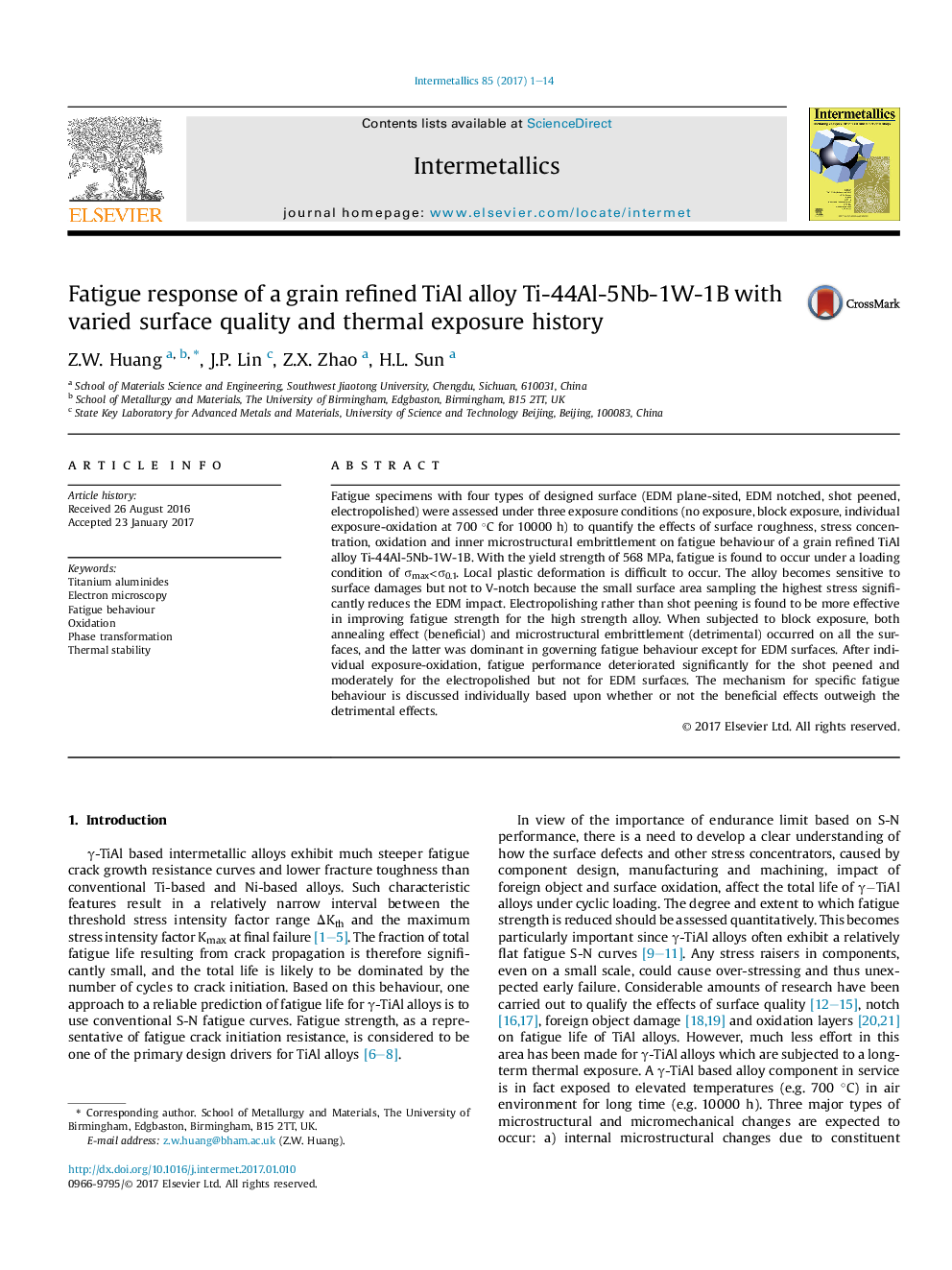| Article ID | Journal | Published Year | Pages | File Type |
|---|---|---|---|---|
| 5457614 | Intermetallics | 2017 | 14 Pages |
Abstract
Fatigue specimens with four types of designed surface (EDM plane-sited, EDM notched, shot peened, electropolished) were assessed under three exposure conditions (no exposure, block exposure, individual exposure-oxidation at 700 °C for 10000 h) to quantify the effects of surface roughness, stress concentration, oxidation and inner microstructural embrittlement on fatigue behaviour of a grain refined TiAl alloy Ti-44Al-5Nb-1W-1B. With the yield strength of 568 MPa, fatigue is found to occur under a loading condition of Ïmax<Ï0.1. Local plastic deformation is difficult to occur. The alloy becomes sensitive to surface damages but not to V-notch because the small surface area sampling the highest stress significantly reduces the EDM impact. Electropolishing rather than shot peening is found to be more effective in improving fatigue strength for the high strength alloy. When subjected to block exposure, both annealing effect (beneficial) and microstructural embrittlement (detrimental) occurred on all the surfaces, and the latter was dominant in governing fatigue behaviour except for EDM surfaces. After individual exposure-oxidation, fatigue performance deteriorated significantly for the shot peened and moderately for the electropolished but not for EDM surfaces. The mechanism for specific fatigue behaviour is discussed individually based upon whether or not the beneficial effects outweigh the detrimental effects.
Keywords
Related Topics
Physical Sciences and Engineering
Materials Science
Metals and Alloys
Authors
Z.W. Huang, J.P. Lin, Z.X. Zhao, H.L. Sun,
